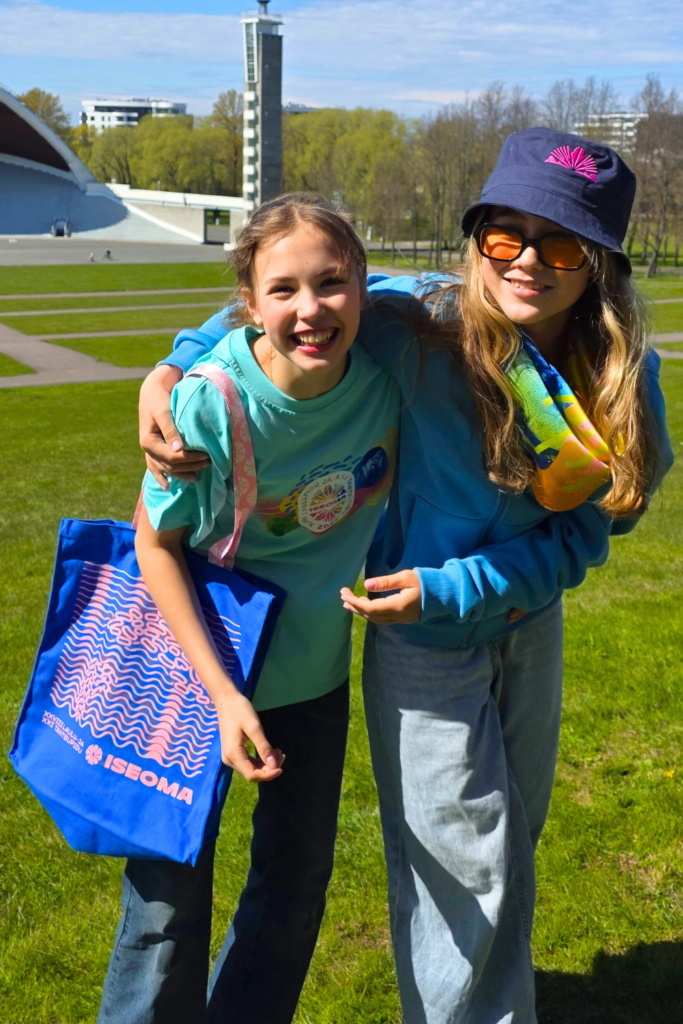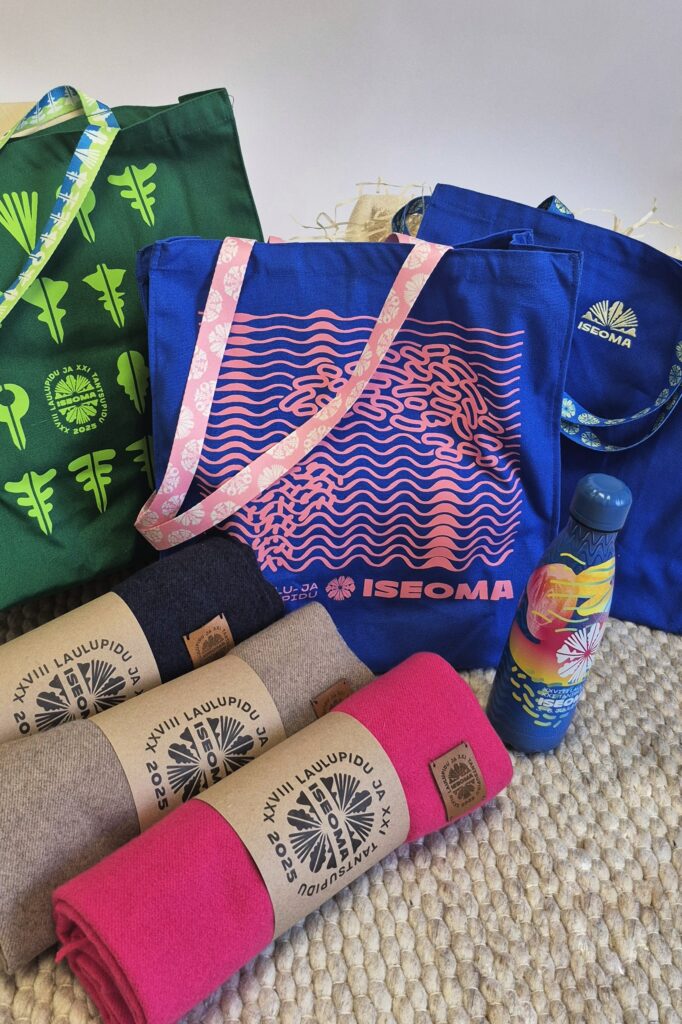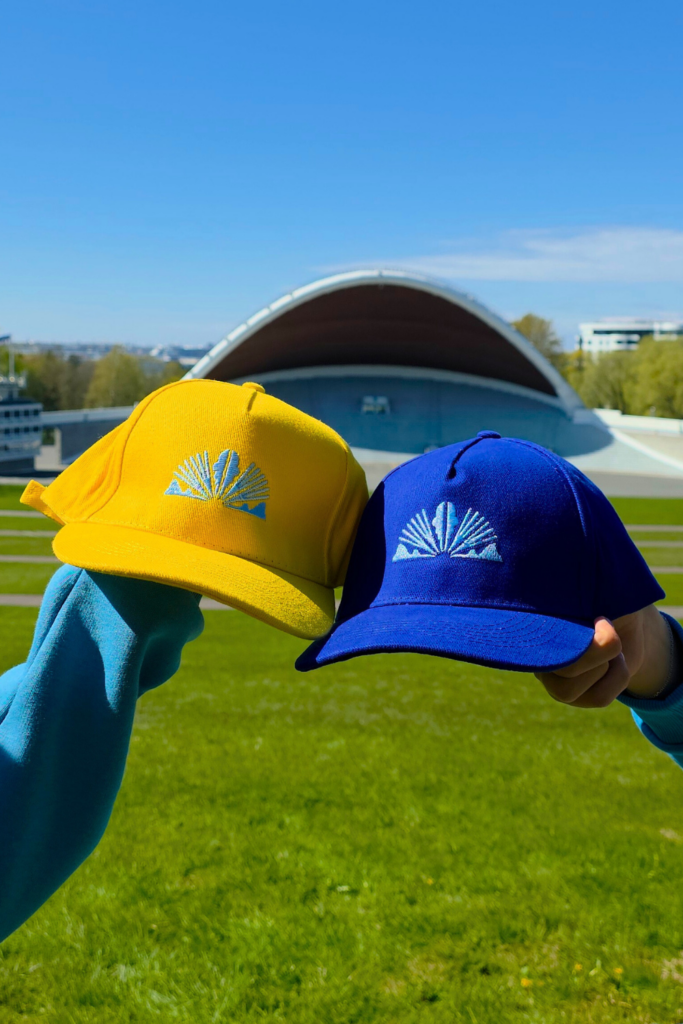When the Estonian people gather once again in Tallinn in the summer of 2025, it will mark another chapter in our national epic. The XXVIII Song Celebration and XXI Dance Celebration are called ISEOMA this year – and it’s more than just a play on words. It’s a powerful summary of what this entire movement is about.
Because if the Song Festival belongs to someone, then it is truly “ise oma” – something deeply personal for every choir singer, musician, folk dancer, and spectator. It’s not something imposed from the outside, but something that comes from deep within.
- The Story of the Song Festival Spans Over 150 Years
- The 2025 Celebration: ISEOMA Takes Place July 3–6 in Tallinn
- What Does a Modern Song Festival Souvenir Look Like?
- 5 Fascinating Facts from the History of the Song and Dance Celebrations
The Story of the Song Festival Spans Over 150 Years
The history of song festivals in Estonia is long and deeply rooted. The first National Song Celebration was held in Tartu in 1869. It was a time of national awakening, and the choirs singing together carried a clear message: we are a people, we have a language, we have our own culture.
This became a tradition that could not be broken—not by censorship, occupation, or changing times. Song festivals have taken place regularly, although there were periods of “silent years.” Historically, these festivals have been closely tied to national identity, the preservation of language, and cultural continuity. In 2003, the traditions of both the Song and Dance Celebrations were inscribed on UNESCO’s List of the Intangible Cultural Heritage of Humanity.
Today, the Song Celebration has grown so large that it is the biggest regular choral music festival in the world. At the last event, over 35,000 performers took part, and the number of spectators exceeded 100,000. It is not just a cultural event – it is a social and national phenomenon.
The 2025 Celebration: ISEOMA Takes Place July 3–6 in Tallinn
ISEOMA will bring together hundreds of groups from across Estonia and abroad. The summer celebration is the result of years of preparation – from learning the repertoire to preliminary rehearsals, jury evaluations, and final selections.
The Song Festival traditionally spans three to four days. It begins with the Dance Celebration at Kalev Stadium, followed by the grand procession and culminating in the main Song Celebration concert at the Tallinn Song Festival Grounds.
At the end of the concert, when “Mu isamaa on minu arm” (“My Fatherland is My Love”) by Lydia Koidula (lyrics) and Gustav Ernesaks (melody) is sung, time seems to stand still. This song is not just performed – it happens with everyone present.
This year’s repertoire once again blends classical choral music with modern approaches. The focus is on music that speaks of the human experience – our roots, choices, and presence.
What Does a Modern Song Festival Souvenir Look Like?
While the Song Festival lasts only a few days, the memories last much longer. That’s why each festival also comes with its own collection of souvenirs. These aren’t just trinkets to glance at once and toss into a drawer. Today’s souvenirs are often practical and designed to be worn and used long after the festival ends.
The official ISEOMA souvenirs are available in the Sokisahtel online store and the festival’s official webshop. The collection was created in collaboration with designers and producers who understand both the choral tradition and everyday needs.
You won’t just find T-shirts with logos — the selection includes high-quality hoodies, sustainable tote bags, reusable raincoats that won’t end up in the trash after one use, and socks that offer more than just momentary warmth.
What makes these souvenirs special is their context. A T-shirt is just a T-shirt—unless it carries the dust of the Song Festival Grounds, the tiredness from rushing to your overnight stay, and the echo of a shared voice. After the festival, it becomes an item with a story.
In addition to practical products, the online store also offers smaller symbolic gifts—magnets, pins, and stickers. These make perfect tokens for conductors, choir mates, or supportive family members who helped bring a young dancer to rehearsals every Sunday.
5 Fascinating Facts from the History of the Song and Dance Celebrations
1. Women Were Not Initially Allowed on Stage
At the first National Song Celebration in 1869 in Tartu, only male choirs and brass bands were allowed to participate. Including women was considered too radical at the time. It wasn’t until 1891 that female choirs were officially included in the program – and today, women make up a significant part of the festival’s core strength.
2. The Song Festival Stage Was Completed Only in 1928
Although song festivals had already been held in Tallinn, the Song Festival Grounds didn’t receive their iconic stage until 1928. The structure was built at record speed—in just four months. The later arch-shaped shell, designed by architect Alar Kotli and engineer August Komendant, was completed in 1960 and remains one of the most iconic symbols in Estonia’s cultural history to this day.
3. The 1947 Song Festival Was a Message to the Authorities
Despite Soviet censorship, Gustav Ernesaks’s “Mu isamaa on minu arm” was performed at the 1947 festival. It wasn’t just a beautiful choral piece—it was also a political statement. Spectators wept, singers sang through tears, and the authorities could no longer stop it. The song became the traditional closing piece of the Song Festival and is still performed at the end of every major celebration.
4. The Dance Celebration Is the Younger Sibling
The Dance Celebration wasn’t part of the original Song Festival. The first nationwide Dance Celebration took place only in 1934. At first, dance was just an additional program, but it quickly grew into an independent and equally important event. Today, for many, the Dance Celebration is the most emotional part of the entire festival week.
5. The Song Festival Helped Restore Independence
In 1988, during the days of the Singing Revolution, hundreds of thousands of people gathered at the Tallinn Song Festival Grounds to sing in support of Estonian independence. It wasn’t an official event, but a grassroots movement. This “unofficial song festival” gave people the courage to keep going—and it’s one of the reasons why Estonia regained its independence in 1991.
Come to Tallinn from July 3–6, 2025, for the XXVIII Song Celebration and XXI Dance Celebration – ISEOMA. It’s Estonia’s largest cultural event, where choirs, folk dancers, and musicians create something the rest of the world has never seen. Whether you bring a flag, a raincoat, or simply your presence – this is your chance to be part of living history.





